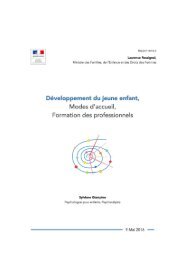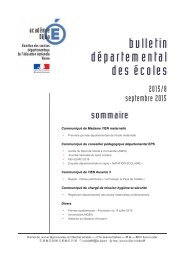agrl_innovations_in_ssa.pdf?utm_content=buffercb41d&utm_medium=social&utm_source=twitter
agrl_innovations_in_ssa.pdf?utm_content=buffercb41d&utm_medium=social&utm_source=twitter
agrl_innovations_in_ssa.pdf?utm_content=buffercb41d&utm_medium=social&utm_source=twitter
You also want an ePaper? Increase the reach of your titles
YUMPU automatically turns print PDFs into web optimized ePapers that Google loves.
household <strong>in</strong>comes have risen by an average of 15 percent as a result of garlic production. This<br />
has made a significant contribution to poverty reduction among garlic-produc<strong>in</strong>g households<br />
(World Bank, 2006).<br />
New or unresolved challenges. There rema<strong>in</strong>s an ongo<strong>in</strong>g need for research to be more closely<br />
<strong>in</strong>tegrated <strong>in</strong>to garlic value cha<strong>in</strong>s so that production and postharvest process<strong>in</strong>g constra<strong>in</strong>ts<br />
are quickly resolved. For <strong>in</strong>stance, farmers still face pest and disease problems so resistant<br />
varieties or management systems that reduce their <strong>in</strong>cidence are required to ensure future<br />
productivity can be susta<strong>in</strong>ed. At the same time there rema<strong>in</strong>s an on-go<strong>in</strong>g need to ensure<br />
access to <strong>in</strong>puts and improve soil management practices.<br />
Lessons learned for scal<strong>in</strong>g up. Access to an export market has been a driv<strong>in</strong>g force for<br />
the development of the garlic <strong>in</strong>dustry, with access enhanced by export through FairTrade<br />
agreements enjoyed by organic garlic production. Ensur<strong>in</strong>g long-term susta<strong>in</strong>ability requires<br />
close coord<strong>in</strong>ation and cooperation of stakeholders <strong>in</strong> the value cha<strong>in</strong>, particularly with regard<br />
to research so that production problems can be addressed as they emerge.<br />
Ghana’s p<strong>in</strong>eapple <strong>in</strong>dustry<br />
This case study concerns the rehabilitation of<br />
the p<strong>in</strong>eapple <strong>in</strong>dustry after loss of valuable<br />
export markets to Europe as new country<br />
producers provided sweeter varieties<br />
favoured by consumers. This resulted <strong>in</strong><br />
loss of foreign earn<strong>in</strong>gs and many farmers<br />
stopped production. This situation prompted<br />
Government and donor <strong>in</strong>tervention as part<br />
of a national economic recovery programme,<br />
<strong>in</strong>volv<strong>in</strong>g multiple stakeholders <strong>in</strong> the<br />
public and private sectors supported by NGOs and <strong>in</strong>ternational agencies. P<strong>in</strong>eapple<br />
productivity has now recovered and is mak<strong>in</strong>g an important contribution to significant<br />
poverty reduction <strong>in</strong> p<strong>in</strong>eapple-grow<strong>in</strong>g areas, with farmers report<strong>in</strong>g a 10 percent<br />
<strong>in</strong>crease <strong>in</strong> household <strong>in</strong>come levels.<br />
Initial context: Although p<strong>in</strong>eapples were grown dur<strong>in</strong>g both colonial and post-colonial periods,<br />
by the early 1970s the crop had largely disappeared. It <strong>in</strong>itially recovered dur<strong>in</strong>g the 1980s,<br />
with three types of export companies dom<strong>in</strong>at<strong>in</strong>g the <strong>in</strong>dustry, larger producer–processors<br />
with a network of smallholder producers, process<strong>in</strong>g companies with their own plantations,<br />
and smaller production companies with a smallholder production base.<br />
This <strong>in</strong>itial recovery of the p<strong>in</strong>eapple <strong>in</strong>dustry from local to export production resulted from<br />
Government’s Economic Recovery Programme (ERP) aimed at <strong>in</strong>creas<strong>in</strong>g foreign currency<br />
earn<strong>in</strong>gs. This required bus<strong>in</strong>esses to export commodities <strong>in</strong> order to earn foreign exchange to<br />
f<strong>in</strong>ance their operations. The recovery was due to favourable climatic conditions for p<strong>in</strong>eapple<br />
The case studies: West Africa 67






